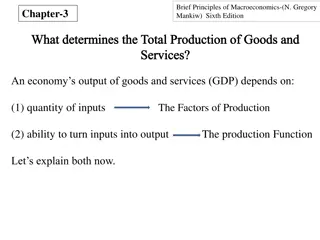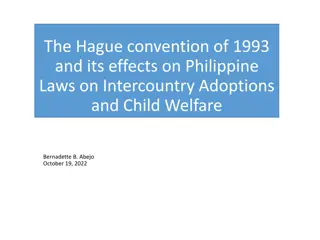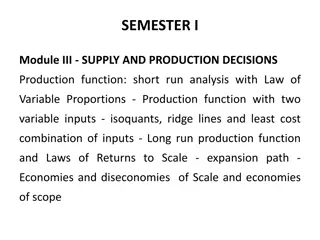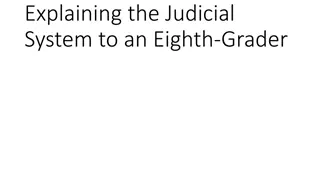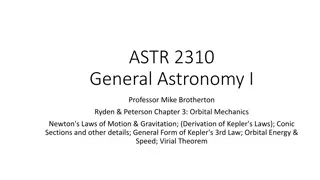Understanding the Production Function and Laws of Production
Production function expresses the relationship between inputs and outputs, showcasing how much can be produced with a given amount of inputs. The laws of production explain ways to increase production levels, including returns to factors, law of variable proportions, and returns to scale. The law of diminishing returns highlights the changing relationship between input and output as factors are altered. Assumptions for the law of variable proportions include a constant state of technology.
Download Presentation

Please find below an Image/Link to download the presentation.
The content on the website is provided AS IS for your information and personal use only. It may not be sold, licensed, or shared on other websites without obtaining consent from the author. Download presentation by click this link. If you encounter any issues during the download, it is possible that the publisher has removed the file from their server.
E N D
Presentation Transcript
Production Function Production Function Duna Jogeswar Rao
Meaning Production function expresses the technological relationship between physical inputs and physical quantities of output . In other words it shows that with a given state of technological knowledge and during a particular period of time how much can be produced with given amount of inputs . Q = f ( L , C , N )
Definitions L. R. Klein, " The production function is a technical or engineering relation between input and output . As long as the natural laws of technology remain unchanged , the production function remains unchanged . " Prof . George J. Stigler, " Production function is the relationship between inputs of productive services per unit of time and outputs of product per unit of time . Watson, " The relationship between a firm's physical production ( output ) and the material factors of production ( input ) is referred to as production function . "
Law of Production Law of Production The law of production describe the ways which are technically possible to in crease the level of production . We have already discussed that the output can be increased in following two ways : The response of output to changes in the amount of a variable factor , when other factors of production remains constant, is referred to as returns to factors or law of variable proportions . Law of Variable Proportions Law of Returns to Scale Return to a Factor Long Run Production Function Short Run Production Function In long run the output can be increased by increasing all the factors , i.e. , the scale of production itself . The response of output to changes in the size of scale of all the factors ( in the same proportion ) is termed as Returns to Scale .
Law of Variable Proportions Or Law of Variable Proportions Or Law of Diminishing Returns Law of Diminishing Returns The law which studies the relationship between one variable factor of production (say labour) and output, keeping the quantities of other factors fixed, is called the law of variable proportion. According to this law as the proportion of factors is changed, the total production at first increases more than proportionately, then equi-Proportionally and finally less than proportionately. economists called it as The Law of Diminishing Returns . The classical
Assumptions of Law of Variable Proportion Law of variable proportion holds good under certain circumstances, which will be discussed in the following lines. Constant state of Technology: It is assumed that the state of technology will be constant and with improvements in the technology, the production will improve. Variable Factor Proportions: This assumes that factors of production are variable. The law is not valid, if factors of production are fixed. Homogeneous factor units: This assumes that all the units produced are identical in quality, quantity and price. In other words, the units are homogeneous in nature. Short Run: This assumes that this law is applicable for those systems that are operating for a short term, where it is not possible to alter all factor inputs.
Causes of increasing Returns Indivisibilities: Indivisibility means that certain factors are available only in some minimum sizes. Such inputs cannot be divided into small sizes to suit the small scale of production. For e.g. there cannot be half a machine, half a computer or half a manager. Such inputs have to be employed even if the scale of production is small. Therefore, as the scale of production increases, these indivisible factors are utilized better and more efficiently. This leads to increasing returns to scale. Internal economics: Internal economics are those economics which are opened to an individual firm when its size expands. They emerge within the firm after its expansion. There can arise several types of internal economics when a firm expands its output. Like Efficiency, cheap source of finance, Reasonable rates etc.
Causes of Diminishing Returns Dis-economics causes for diminishing returns: Be beyond a stage - beyond the optimum stage - increase in the quantity of the variable factor only disrupts the existing organisation . It spoils division of labour and breeds inefficiency. In short when the fixed factors reach the point of optimum utilization, every additional unit of variable factor will bring in less than proportionate returns i.e. , marginal product will fall . Imperfect substitutability of factors of production: Diminishing returns occur because the factors of production are imperfect substitutes for one another . For example , we take two factors - land as a fixed factor and labour as a variable factor . In the beginning with additional doses of labour, production goes on increasing at an increasing rate. In other words, up to certain point, substitution is beneficial. Once that optimum point is reached the fixed factor cannot be compensated by the variable factor.
Causes of Negative Returns This situation arises when excessive variable factors adversely affect the efficiency of fixed factor. The proverb "too many cooks spoil the broth", aptly applies to this situation.
Stage of Rational Decision The law of variable proportions is based on the fundamental technical fact that if we increase the proportion of one factor of production , keeping other inputs fixed , then the variable factor must eventually get diminishing returns . Hence in order to achieve maximum profits , the rational decision of the firm will be to operate in stage II . Why ? In Stage I : The fixed factor is abundant and remains under utilized , it will pay the producer to continue employing additional units so that the output increases . Thus , the firm will have an incentive to expand through stage I. because in ' this stage , the marginal product of the variable factor becomes negative and there is actual decline in the total production. No rational producer would like to operate in Stage III , Thus the rational decision of the firm will be neither to operate in stage I nor in stage III . It will operate in stage II where ( a ) TP is increasing at a decreasing rate , ( b ) MP and AP are falling but are positive .
Law of Returns to Scale Returns to scale in economics refers to a term that states that the degree of change in input factors changes the output proportionally and concurrently during the production process. It reflects the quantitative change that applies in the long-term using similar technology. It forms the basis of measuring a firm s or industry s efficiency of production capacity. Definitions: The term returns to scale refers to the changes in output as all factors change by the same proportion. Koutsoyiannis Returns to scale relates to the behaviour of total output as all inputs are varied and is a long run concept . Leibhafsky
Assumption: 1. All factors are variable but enterprise is fixed. 2. Input ( labour & capital ) are used in fixed proportion. 3. No change in state of technology. 4. There is perfect competition. 5. The product is measured in quantities.
Returns to scale are of the following three types: 1. Increasing Returns to scale: An increasing returns to scale occurs when the output increases by a larger proportion than the increase in inputs during the production process. 2. Constant Returns to Scale: A constant returns to scale means that the proportionate increase in input is exactly equal to the increase in output. 3. Diminishing Returns to Scale: A decreasing returns to scale occurs when the proportion of output is less than the desired increased input during the production process.
Explanation In the long run, output can be increased by increasing all factors in the same proportion. Generally, laws of returns to scale refer to an increase in output due to increase in all factors in the same proportion. Such an increase is called returns to scale.
Increasing Returns to Scale: Increasing returns to scale or diminishing cost refers to a situation when all factors of production are increased, output increases at a higher rate. It means if all inputs are doubled, output will also increase at the faster rate than double. Hence, it is said to be increasing returns to scale. This increase is due to many reasons like division external economies of scale. Increasing returns to scale can be illustrated with the help of a diagram 8. In figure 8, OX axis represents increase in labour and capital while OY axis shows increase in output. When labour and capital increases from Q to Q1, output also increases from P to P1which is higher than the factors of production i.e. labour and capital.
Diminishing Returns to Scale: Diminishing returns or increasing costs refer to that production situation, where if all the factors of production are increased in a given proportion, output increases in a smaller proportion. It means, if inputs are doubled, output will be less than doubled. If 20 percent increase in labour and capital is followed by 10 percent increase in output, then it is an instance of diminishing returns to scale. The main cause of the operation of diminishing returns to scale is that internal and external economies are less than internal and external diseconomies. It is clear from diagram 9. In this diagram 9, diminishing returns to scale has been shown. On OX axis, labour and capital are given while on OY axis, output. When factors of production increase from Q to Q1(more quantity) but as a result increase in output, i.e. P to P1is less. We see that increase in factors of production is more and increase in production is comparatively less, thus diminishing returns to scale apply.
Constant Returns to Scale: Constant returns to scale or constant cost refers to the production situation in which output increases exactly in the same proportion in which factors of production are increased. In simple terms, if factors of production are doubled output will also be doubled. In this case internal and external economies are exactly equal to internal and external diseconomies. This situation arises when after reaching a certain level of production, economies of scale are balanced by diseconomies of scale. This is known as homogeneous production function. homogenous production function is a good example of this kind. This is shown in diagram 10. In figure 10, we see that increase in factors of production i.e. labour and capital are equal to the proportion of output increase. Therefore, the result is constant returns to scale. Cobb-Douglas linear
Thank You Thank You





